Editor’s note: We had talked a little about H-beam and I-beam connecting rods in article how to choose the right connecting rods? In today’s article, Emir Kurtović mainly discussed the differences between H-beam and I-beam conrods in design, and he chose MaXpeedingRods conrods to be the typical example of the H-beam.
A quick word on I beam and H beam
Now, I’ll need you to ignore the difference in size between these rods. One is for a Toyota 4AGE 1.6 16v engine and the other is for a Fiat Twin cam Turbo 2.0 engine going into a Lancia Delta Integrale (a.k.a. Lampredi engine). Their difference in size aside, these connecting rods are great for this video because they are typical examples of the H beam and I beam connecting rod designs.
Now people often ask which design is better, which one should I put into my engine? Well before we answer that we first have to understand where the name I beam and H beam come from. To understand why they are called H and I beam conrods you have to look at their cross-section. You have to look at the rod from above as if you were looking at it from the top of the cylinder bore. You then cut off the top half of the rod and you get the cross section. The cross-section of the H beam is a capital letter H, while the cross-section of I beam is a capital letter I.
Now that we know why they’re called I beam and H beam let’s see which one is better. Which one should you chuck into your precious engine? Well, I’ll be honest with you. I-beam vs H-beam is a very controversial topic. You could read 6 articles on H beam vs I beam and chances are high 3 articles will tell you one thing and the other three articles will tell you completely different things.
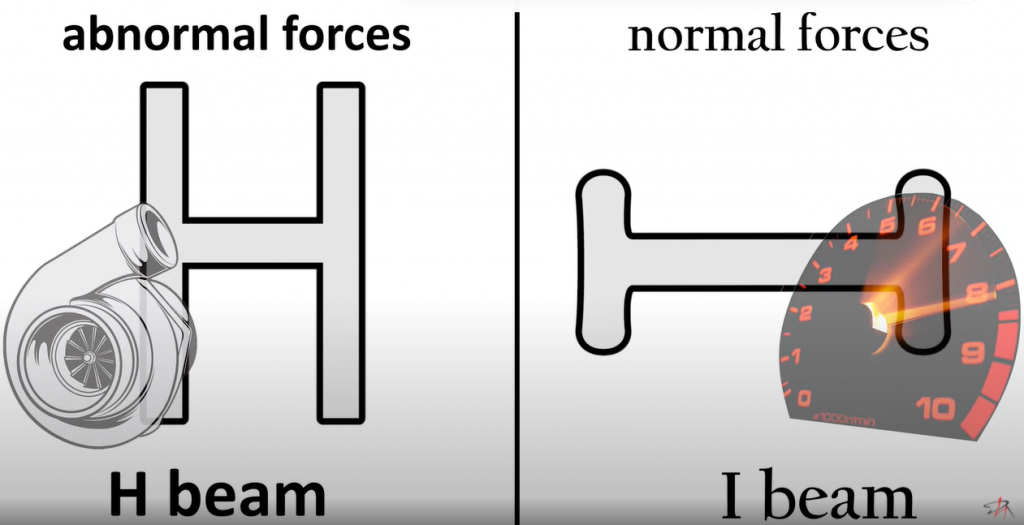
H beam Vs I beam
There was a popular opinion for some time that the H beam design is stronger and that the I beam design is lighter. Based on this the H beam design was supposedly better suited to the high combustion pressures associated with forced induction and the I beam was better suited for high revving naturally aspirated engines since it is lighter. This is a rule of thumb, at best. Honestly, it’s not even a rule of thumb because today we have so many exceptions to this rule that it simply doesn’t hold water anymore at all.
You also might hear that the I beam is better at handling normal, while the H beam is better at handling abnormal forces. If we grossly oversimplify this it means that the I beam is better at resisting being bent from the side while the H beam is better at resisting being bent at the face. Again, this is a rule of thumb, and provisions in the design are key to making the rod handle both normal and abnormal forces within an engine. If the rod is made from the right material and if the design incorporates that material in the right places both I beam and H beam can be made to handle abnormal and normal forces equally well.
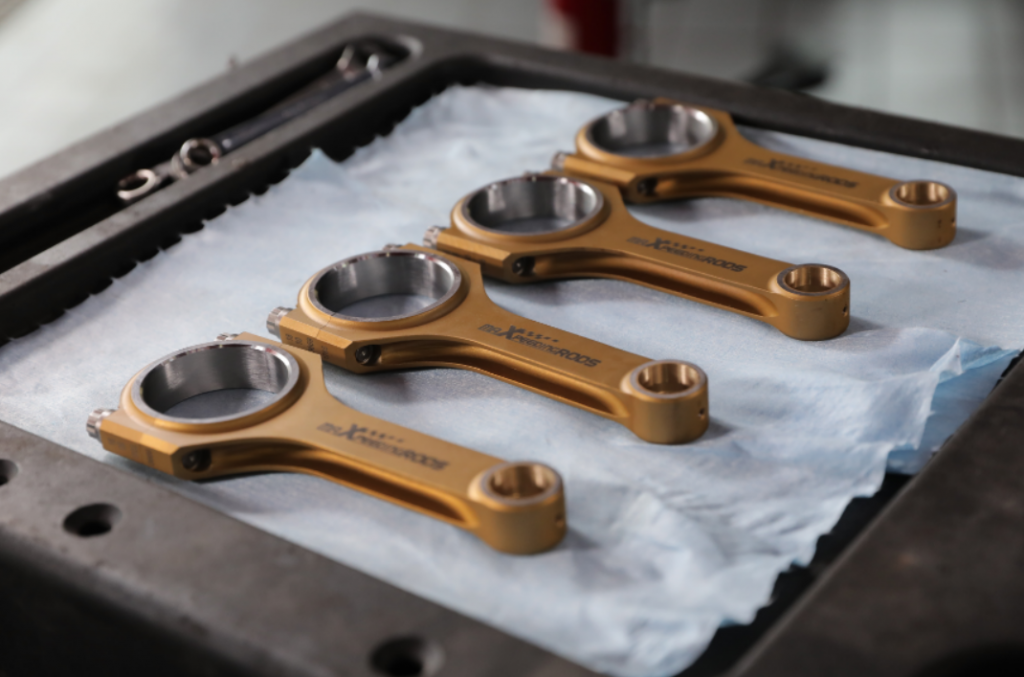
How to choose the right connecting rods
So which connecting rods should you choose? If you’re a car enthusiast building an engine for the street, some track days, or maybe some amateur racing. It doesn’t really matter at all. Either design will work well and you really shouldn’t focus that much on whether the rod is an H beam or an I beam, instead you should focus on the material the rod is made from and how it’s made.
This is the reason why I chose the MaXpeedingRods connecting rods for my engine build. They are a budget rod, very affordable, but despite that, they are made from the right material using the right manufacturing process. They are made from 4340 steel and after being forged they are multi-stage heat treated, surface treated as well as x-rayed. And this is something that will play a much more important role in the ultimate performance of your rod rather than the H-beam or I-beam design. Something else that is absolutely key and that could make or break your rods is your installation, more specifically the tolerances and clearances upon installation. Do this wrong and the rod will fail, no matter how good it is.
H and I beam rod designs
Now let’s look at some things that you want to avoid on both H and I beam rod designs.
- Sharp edges and angles. You do not want these anywhere on the rod. You want smooth edges, radiuses, fillets and tapers. These will spread the load and ensure your rod will cope with the stresses within an engine.
- You want a shot peened surface. Almost all rods have that today.
- You want the maximum possible connection between the big end and the shaft. This is a very common area of failure and the largest possible connection here is key for strength and durability.
- Also you have to think about your application. If you want high rpms you need to look for the lightest possible rod that will still provide the needed strength. If you’re looking for massive hp and lots of psi of boost then weight takes a backseat to strength.
Now buying MaXpeedingRods forged connecting rods at maxpeedingrods.com will get a 5% discount(code: Blog).
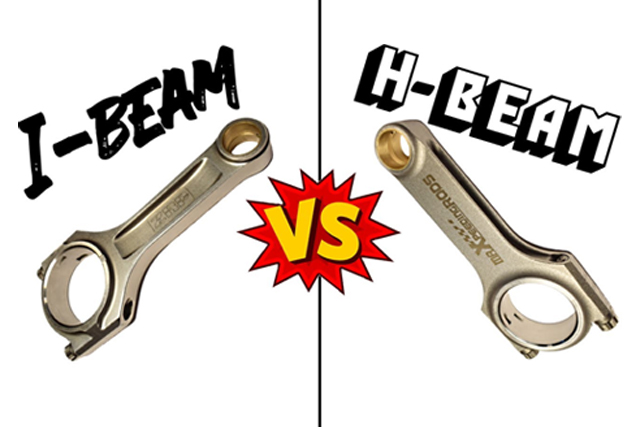

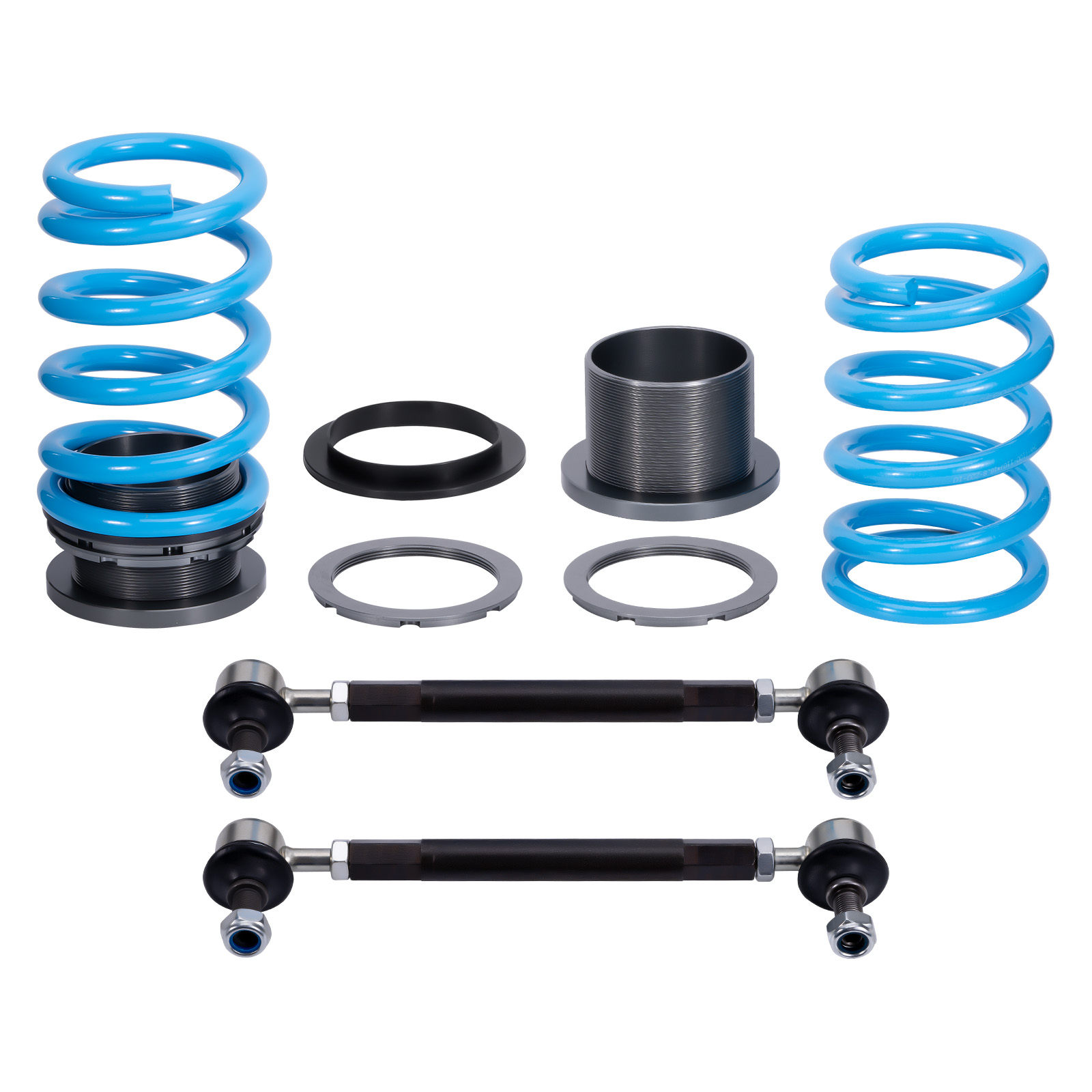
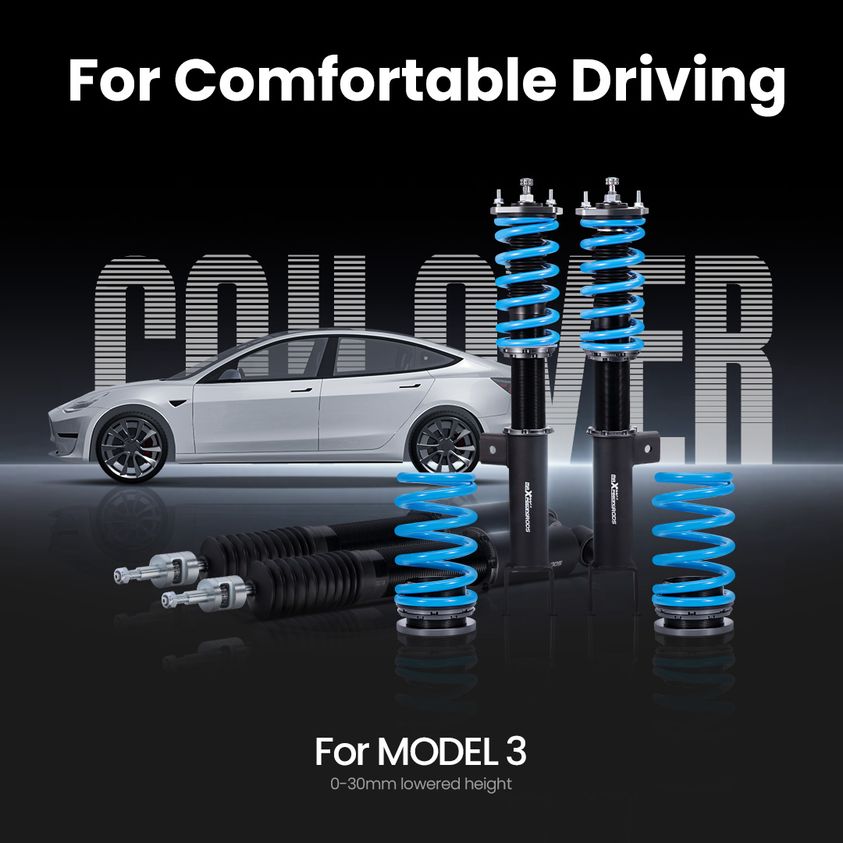



Need instructions for remote brake booster
Which is inlet and outlet ?
You are so cool man, the post on your blogs are super great.~’,;~